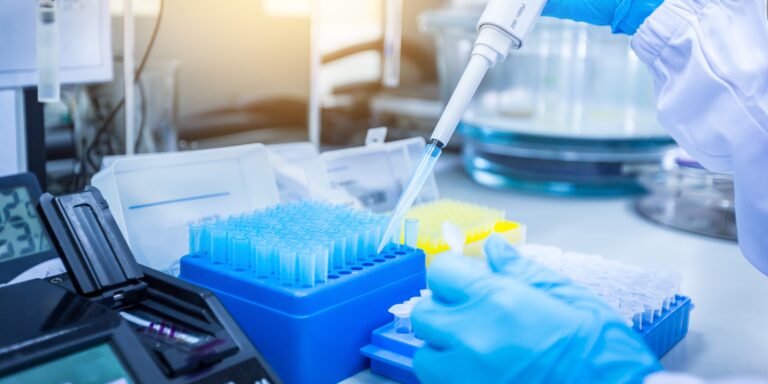
Polymerase Chain Reaction (PCR) is a molecular biology technique used to amplify and replicate specific segments of DNA. Over time, PCR technology has evolved, giving rise to various methodologies, each tailored to specific needs. In this blog post, we will explore the different types of PCR and their applications.
Standard PCR
Conventional PCR enables the replication of desired DNA sequences by utilizing short fragments of DNA called primers and multiple cycles of DNA synthesis to amplify the selected segment of the genome. As each cycle is repeated, the amount of target DNA exponentially increases, resulting in a substantial quantity of the desired DNA for subsequent analysis, such as sequencing, genetic analysis, or cloning. This can also be referred to as end-point PCR, a method in which the maximum number of copies of the target DNA or RNA is produced. PCR has revolutionized various fields of research, medicine, and biotechnology due to its precision, speed, and sensitivity.
qPCR
Quantitative PCR (qPCR), or real-time PCR, is similar to standard PCR, though it also includes the use of fluorescent dyes and fluorometers to measure the accumulation of the amplification product in real time. The fluorescence signal is used to create a quantification curve, which allows scientists to determine the initial quantity of DNA in the sample. Its ability to provide both qualitative and quantitative information in a single assay has made qPCR a crucial tool in molecular biology, diagnostics, and research. This method is essential for determining gene expression levels, analyzing copy number variations, and detecting pathogens.
RT-PCR
Reverse Transcription PCR (RT-PCR) is a sensitive technique that can detect and quantify mRNA levels from small samples by combining reverse transcription with the polymerase chain reaction. This technique allows researchers to convert RNA into complementary DNA (cDNA) using the enzyme reverse transcriptase, which serves as a template for subsequent PCR amplification following the standard procedure. RT-PCR has also led to the development of quantitative reverse transcription PCR (qRT-PCR), which quantifies RNA expression levels in real-time.
Hot Start PCR
Hot Start PCR reduces non-specific amplification by preventing the polymerase from initiating DNA synthesis until the reaction is heated to the optimal temperature. A specialized DNA polymerase enzyme is used, typically Taq DNA polymerase, to prevent non-specific amplification during assay setup. This technique enhances specificity, making it particularly useful for high-throughput applications, diagnostic assays, and amplification of templates with secondary structures.
Digital PCR
Digital PCR partitions the DNA sample into numerous individual reactions, either physically or digitally. By counting the number of positive reactions, researchers can directly quantify the amount of target DNA without the need for a standard curve. Digital PCR is highly precise and is employed in applications like absolute quantification and detecting rare mutations. There is also the Droplet Digital PCR (ddPCR) method which is based on water-oil emulsion droplet technology. Droplets formed in the emulsion function similarly to testubes or wells in a plate where the PCR reaction takes place. ddPCR partitions nucleic acid samples into nano-sized droplets where amplification takes place within each droplet.
Multiplex PCR
Multiplex PCR enables the amplification of multiple target sequences in a single reaction. By using multiple primer sets, each specific to a different target, researchers can analyze several genes or genetic markers simultaneously. This technique saves time, reduces sample consumption, and is valuable for analyzing complex genetic traits.
From the foundational standard PCR to the advanced digital PCR, the landscape of polymerase chain reaction techniques is diverse and ever-expanding. Each type of PCR method brings unique capabilities, allowing researchers and diagnosticians to explore and manipulate DNA and RNA in creative ways. By understanding these various PCR techniques, scientists can choose the right tool for their specific research or diagnostic needs, pushing the boundaries of biology and medicine.
WP-0042
